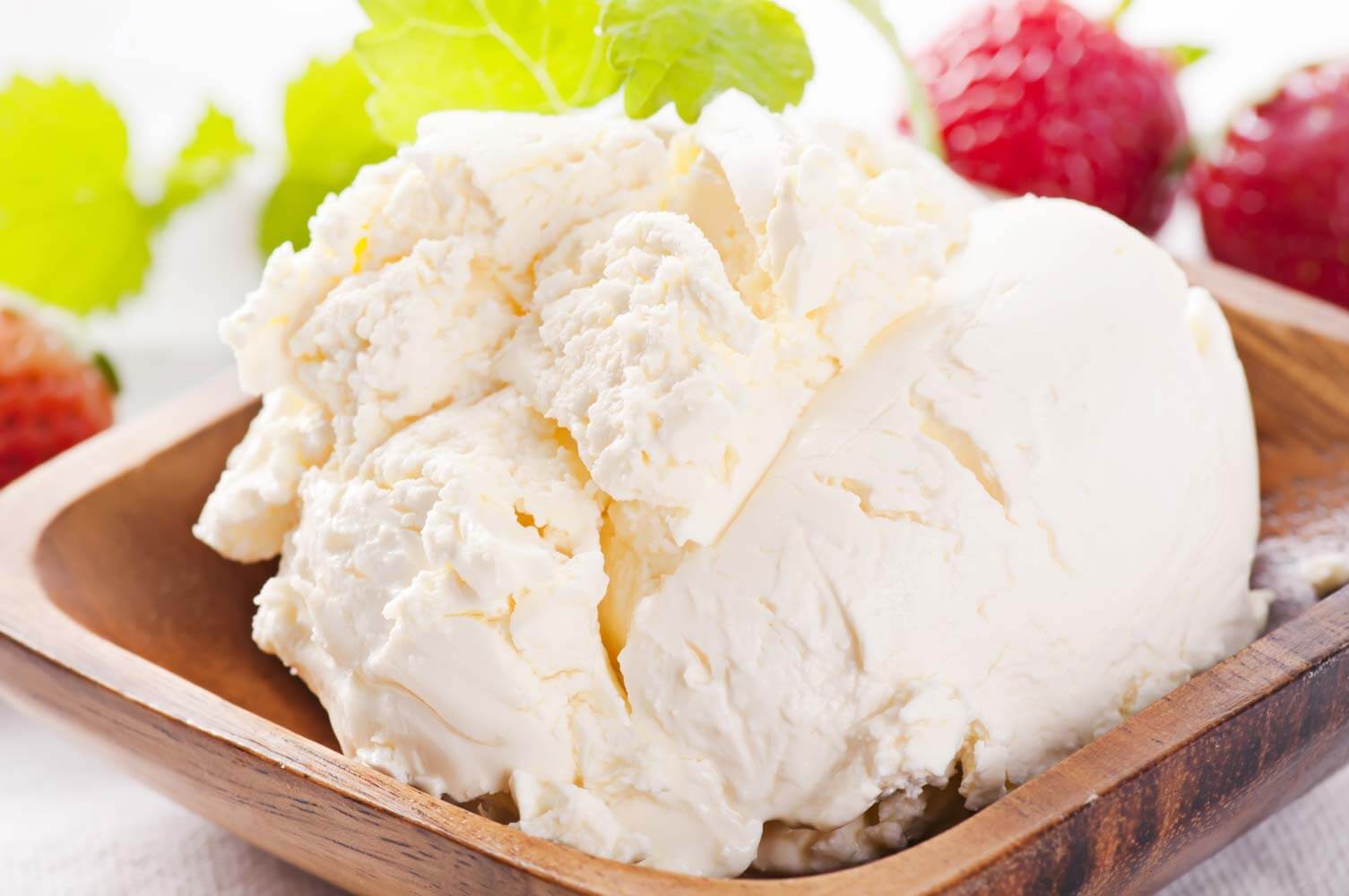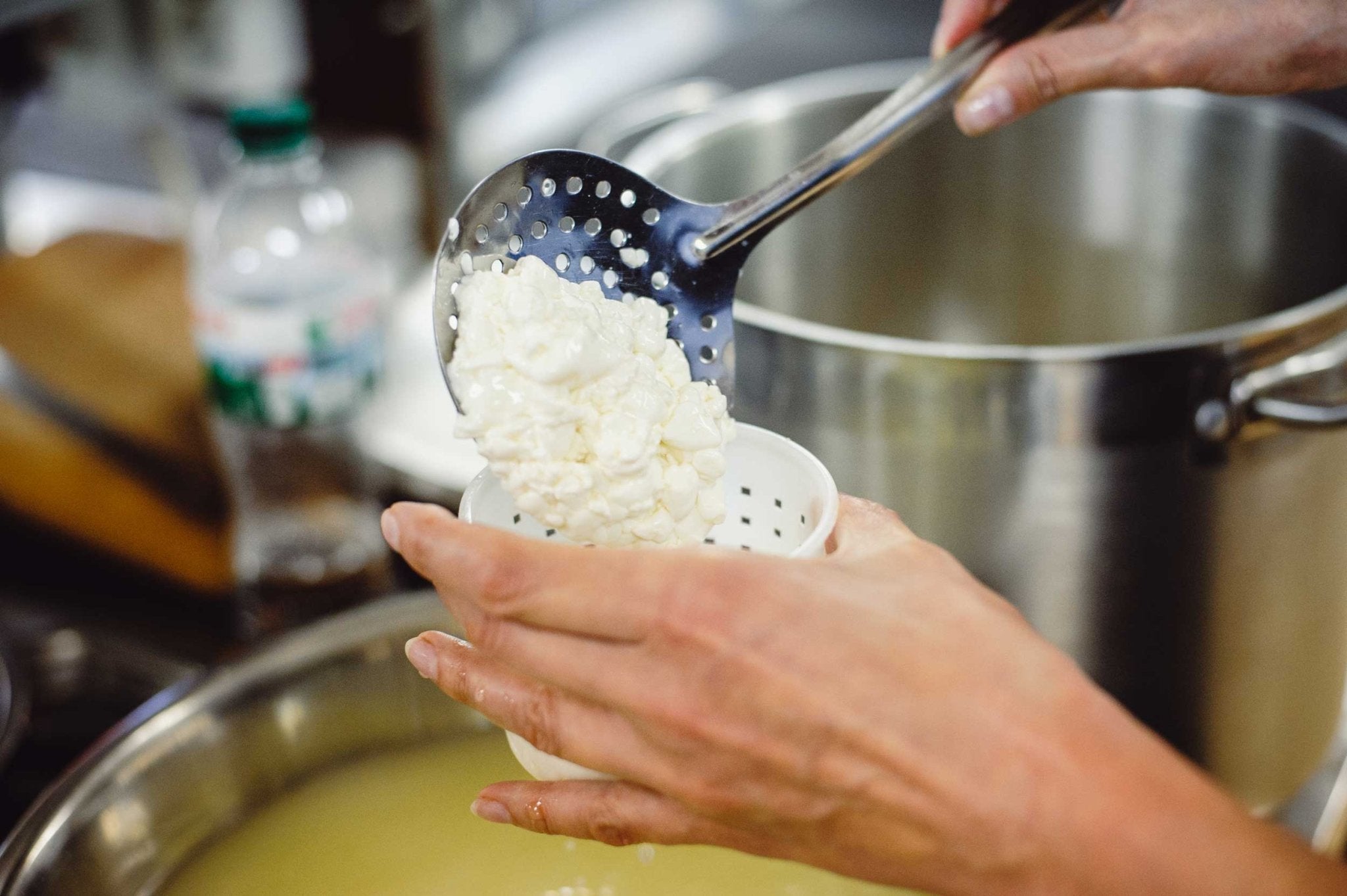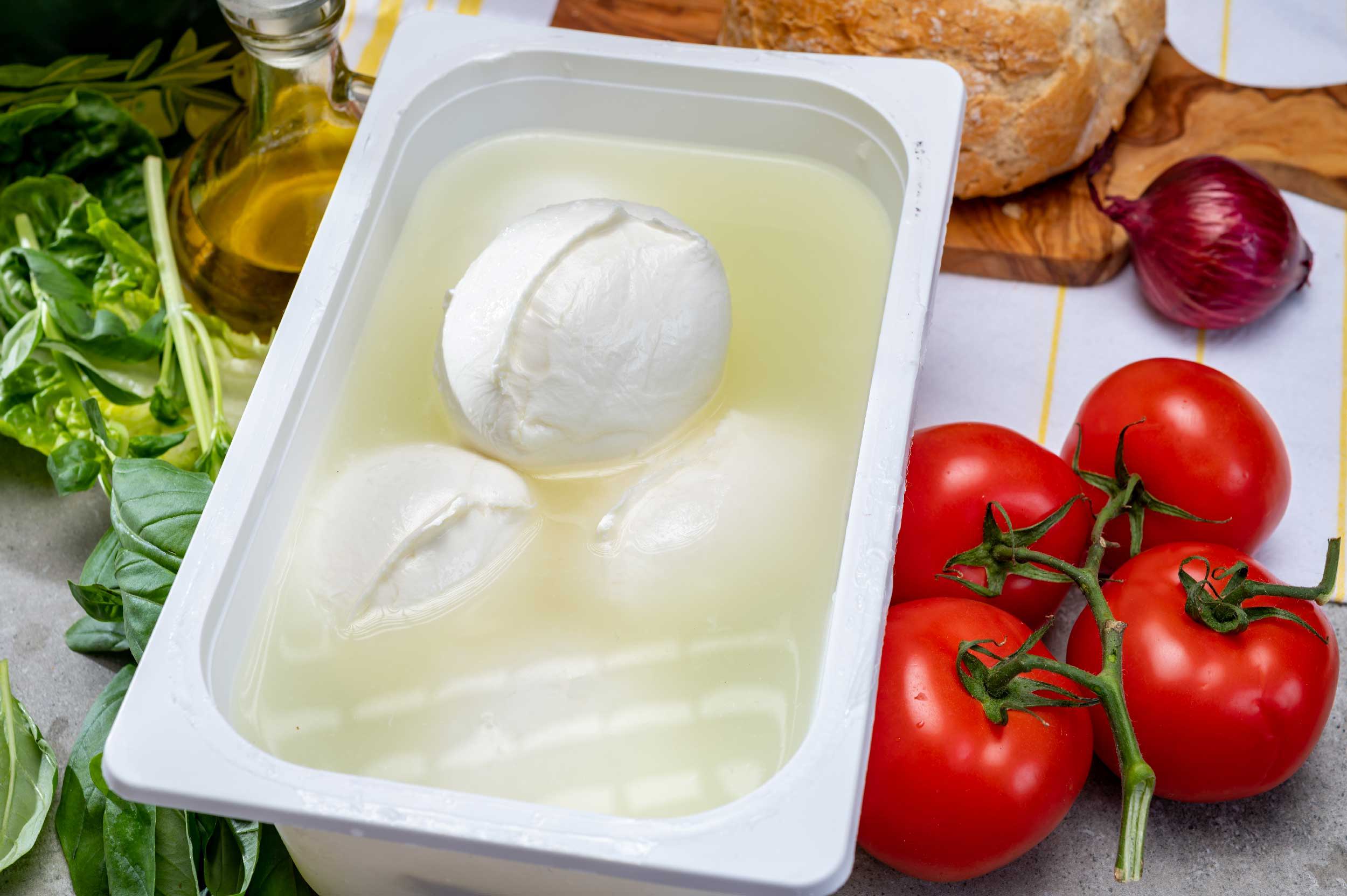
Mascarpone Cheese Making Recipe
-
Yield
1 Pound
-
Aging Time
None
-
Skill Level
Beginner
-
Author
Jim Wallace

Ingredients
Total price for selected items: Total price:
Instructions
Lets Make Mascarpone
Here are two great recipes for making Mascarpone, the first recipe is a little faster and uses Tartaric Acid, while the second recipe has a bit more flavor and uses a Starter Culture.
In both of the Mascarpone recipes below we used high temp pasteurized milk (170°F+) and Ultra Pasteurized cream because these are most available at local grocery stores.
If you have milk that has been pasteurized at a lower temperature and fresh cream, these will make an even richer Mascarpone.
Homemade Mascarpone is so delicious that we're sure you'll enjoy these recipes with any and every type of milk/cream you can find.
Mascarpone Recipe (Tartaric Acid)
-

Heat Milk/Cream
Set up a Bain Marie (double boiler) by filling a 2 quart pot with 2-3 inches of water and placing a metal bowl, large enough to hold 1 quart each of milk and cream, on top of the pot.
Pour 1 pint of whole milk (3.25% fat) and 1 pint of heavy cream (36-40% fat) into the bowl.
Add 1/8 tsp of calcium chloride to help set a firm curd since this is a pasteurized milk (not needed if using a fresh cream).
slowly heat the water, raising the milk/cream temperature to 185-190°F. You will notice it starting to foam at about 175°F.
-


Add Tartaric Acid
Allow the hot milk/cream to sit at this temperature for 5 minutes.
While waiting, mix 1/4 tsp Tartaric Acid with 2-3 tbs of water, set the dilution aside.
After holding the temperature for 5 minutes, add the diluted Tartaric Acid to the milk/cream. Stir very gently because a curd will begin to form almost immediately. This will not be a firm curd as in other cheeses but many small curd bits that will soon look like a thin cream of wheat consistency.
-


Cool & Drain Curds
Allow the curds to cool for about 20-30 minutes. During this time, prepare a colander, for draining the curds, by lining it with the butter muslin or other suitable draining cloth. These should both be sanitized beforehand. Once lined, place the colander in a sink or over another pot to collect the whey. About 1 pint of whey will be released.
Once cooled, the curd can be ladled into the lined colander. When all of the curd has been transferred, simply fold the layers of cloth over the draining curd and place it in a cool area or in the fridge.
Drain for 1-2 hours for a traditional Mascarpone texture. Or, drain for up to 12 hours in a refrigerator for a whipped Cream Cheese texture.
-


Finished Mascarpone
The finished Mascarpone can now be transferred to a covered dish or container and stored in the refrigerated. It should be used within 7-10 days due to its fresh nature and high moisture.
Note: Mascarpone will become much thicker once chilled and will become more spreadable when brought back to room temperature. It can also be blended with confectioners sugar or honey for a sweeter cheese.
Mascarpone Recipe (Starter Culture)
-

Heat Milk/Cream
This recipe uses a live starter culture to convert lactose to lactic acid which makes the milk/cream coagulate. This recipe usually produces more flavor than the previous one using Tartaric Acid.
We will begin with a mix of 1 pint whole milk (3.25% fat) plus 1 pint of heavy cream (36-40% fat). The overall fat content of this will be 20-25%
In a sanitized 1.5-2 quart pot add 1 pint whole milk (3.25% fat) and 1 pint heavy cream (36-40% fat). Add 1/8 tsp Calcium Chloride to the milk/cream mixture to help set a firm curd since this is pasteurized milk (not needed if using a fresh cream).
Slowly heat the milk/cream to 86°F. This can be done directly on the stove while stirring slowly.
-


Add Culture & Set
Once the milk/cream reaches 86°F, remove the pot from the heat.
Sprinkle one packet of C33 Creme Fraiche Culture over the surface of the milk/cream to rehydrate the culture. After 1 minute stir the culture into the milk.
This culture contains a small amount of vegetarian rennet in it to help form a nice curd.
Now cover the pot and move it to a quiet place at room temperature (68-74°F).
Allow this to sit for 10-12 hours (less time if in a warmer location). Do not disturb the pot during this time. It's fine for the milk/cream temperature to drop to room temperature during this period.
When the curd is ready, you will see a definite thickening of the milk and perhaps some clear drops or pools of whey on the surface. At this point the milk/cream should be very thick and forming a more traditional but very soft curd.
-



Drain Curds & Release Whey
When the curd is ready, it can be ladled into a colander lined with Butter Muslin to drain. When all of the curd has been transferred, simply fold the layers of cloth over the draining curd and place it in a cool area or in the fridge.
Drain for 1-2 hours for a traditional Mascarpone texture. Or, drain for up to 12 hours in a refrigerator for a whipped Cream Cheese texture.
-


Finished Mascarpone
The finished Mascarpone can now be transferred to a covered dish or container and stored in the refrigerated. It should be used within 7-10 days due to its fresh nature and high moisture.
Note: Mascarpone will become much thicker once chilled and will become more spreadable when brought back to room temperature. It can also be blended with confectioners sugar or honey for a sweeter cheese.
Tips and Suggestions
Using Ultra Pasteurized Half & HalfOk with a Starter Culture: Half & Half works great in the second recipe where we used a Creme Fraiche Starter Culture, but it was not ideal in the first recipe where we used Tartaric Acid.
Not Good with Tartaric Acid: When used in the recipe made with Tartaric Acid, we found it formed a much more granular curd. Also, when drained, a much chalkier and grainy consistency with less of a creamy and spreadable consistency.
When we tried to spread this cheese, it was more crumbly than spreadable.
These photos clearly show the grainy nature of using all Ultra-Pasteurized Half and Half for making Mascarpone.
I would say this batch was disappointing compared to Mascarpone made with milk that was not Ultra-Pasteurized. The problem with Ultra-Pasteurized milk is that the higher temperatures cause milk proteins to become destabilized and this causes the curd to form into a granular consistency.




This is the best option if you have access to fresh cream.
If you are lucky enough to have access to a local source of raw milk, or have your own, especially high fat jersey milk, allow the cream to rise naturally overnight at refrigeration temperatures and skim it off the next morning. This makes a very nice cream for Mascrpone. The lower fat milk that's left over can be used in another recipe like our Parma style or Alpine Style recipes with great results.
With this unmodified cream you'll be making extraordinary Mascarpone. In this case I would suggest using the recipe made with the Creme Fraiche Starter Culture for the best yield and flavor.
You may need to add 20-40% less culture than recommended because raw milk has its own bacteria structure still intact. This will vary on the milk and its freshness.
Best Milk/Cream Options
- Fresh Unpasteurized Cream This was the best of all the trials here
- Whole Milk + UPcream + Starter Culture This was the best using store bought milk and cream
- Whole Milk + UPcream + Tartaric Acid This was quite good but less complexity and smaller yield
- UP Half/Half + Tartaric Acid This was my least favorite due to dry coarse cheese
Trouble Shooting
Here are a few tips to help you make perfect Mascarpone
- Too Dry the cream or milk can be added back in
- Too moist drain longer
- Acidic/Strong add less Tartaric Acid/Starter Culture or drain for less time and chill ASAP. Adding confectionery sugar can sweeten the final cheese
- Too Sweet if using a culture, let the culture set for more time. If using Tartaric Acid add a little bit extra
Cheese Making Supplies
Related Products
You May Also Like


































